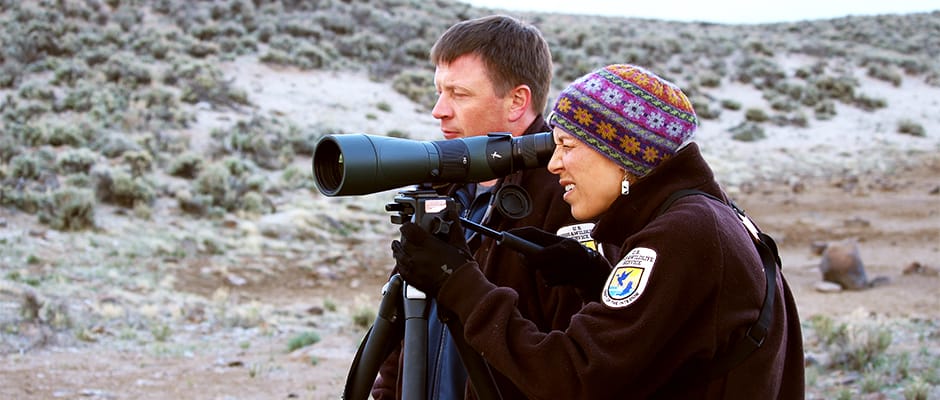Share this article
USFWS supports diversity, professionalism as TWS Partner
The U.S. Fish and Wildlife Service has signed on as The Wildlife Society’s newest Strategic Partner – a significant step forward in the agency’s efforts to strengthen support for its science professionals and the applied science necessary to guide effective wildlife management decisions in a rapidly changing world.
TWS, the nation’s oldest and most prominent professional society for wildlife biologists, has worked for decades to promote and represent scientific professionalism and excellence in wildlife conservation and management—a mission that aligns well with that of the over 9,000-employee USFWS and its strong commitment to science-driven management.
“Increasing collaboration and information exchange with the U.S. Fish and Wildlife Service is in perfect alignment with our Society’s efforts to strengthen the link between wildlife science and management,” said Ed Thompson, TWS chief operating officer.
A memorandum of understanding signed in March opened the door to further discussions between the two organizations, which lead to a financial assistance award in support of TWS’ Strategic Partner Proposal.
As a Strategic Partner, USFWS employees will benefit from access to TWS’ extensive network of professionals and vast library of scientific publications. The agency will support TWS publications and communication channels, not only financially but through contributed scientific content. Semi-annual brainstorming and planning meetings will increase collaboration between USFWS and TWS’ Government Affairs and Partnerships team to identify research needs and priorities to support the Service’s conservation work.
Natural resources students, particularly those of color or urban background, will benefit from the partner relationship’s emphasis on diversity and education. USFWS will sponsor up to three students for TWS’ Native Student Professional Development Program. These students will utilize TWS’ reach within the academic community to identify how colleges, universities and other such institutions can better educate and train a diverse cadre of students for employment with resource agencies.
These efforts are vital at a time when the earth’s human population is rapidly expanding and becoming more urban and diverse – and when human impacts are driving change at a planetary scale.
“The enormous conservation challenges we face in the coming decades require us to transform the way we approach our work as an agency and as a conservation community. Without a strong scientific understanding of the changes happening on the landscape, we can’t meet those challenges,” said U.S. Fish and Wildlife Service Director Dan Ashe. “Expanding our partnership with The Wildlife Society will help build that capacity now, and recruit a new generation of wildlife professionals to carry on this critical work.”
Header Image: USFWS employees scout the area for sage grouse. ©USFWS Pacific








